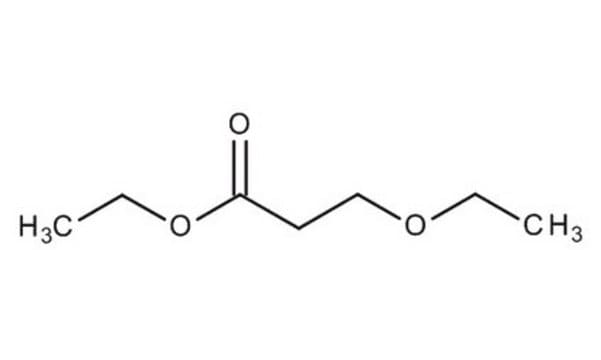484431
Propylene glycol monomethyl ether acetate
ReagentPlus®, ≥99.5%
Synonyme(s) :
DOWANOL® PMA
About This Item
Produits recommandés
Pression de vapeur
3.7 mmHg ( 20 °C)
Niveau de qualité
Gamme de produits
ReagentPlus®
Pureté
≥99.5%
Température d'inflammation spontanée
669 °F
Limite d'explosivité
13.1 %
Indice de réfraction
n20/D 1.402 (lit.)
Point d'ébullition
145-146 °C (lit.)
145-146 °C
Solubilité
water: soluble 198 g/L at 20 °C
Densité
0.970 g/mL at 25 °C (lit.)
Chaîne SMILES
COCC(C)OC(C)=O
InChI
1S/C6H12O3/c1-5(4-8-3)9-6(2)7/h5H,4H2,1-3H3
Clé InChI
LLHKCFNBLRBOGN-UHFFFAOYSA-N
Informations sur le gène
human ... AR(367) , IMPDH2(3615) , NR3C1(2908) , PGR(5241)
Vous recherchez des produits similaires ? Visite Guide de comparaison des produits
Description générale
Application
Informations légales
®Trademark of The Dow Chemical Company
Mention d'avertissement
Warning
Mentions de danger
Conseils de prudence
Classification des risques
Flam. Liq. 3
Code de la classe de stockage
3 - Flammable liquids
Classe de danger pour l'eau (WGK)
WGK 2
Point d'éclair (°F)
113.9 °F - closed cup
Point d'éclair (°C)
45.5 °C - closed cup
Choose from one of the most recent versions:
Déjà en possession de ce produit ?
Retrouvez la documentation relative aux produits que vous avez récemment achetés dans la Bibliothèque de documents.
Les clients ont également consulté
Notre équipe de scientifiques dispose d'une expérience dans tous les secteurs de la recherche, notamment en sciences de la vie, science des matériaux, synthèse chimique, chromatographie, analyse et dans de nombreux autres domaines..
Contacter notre Service technique













